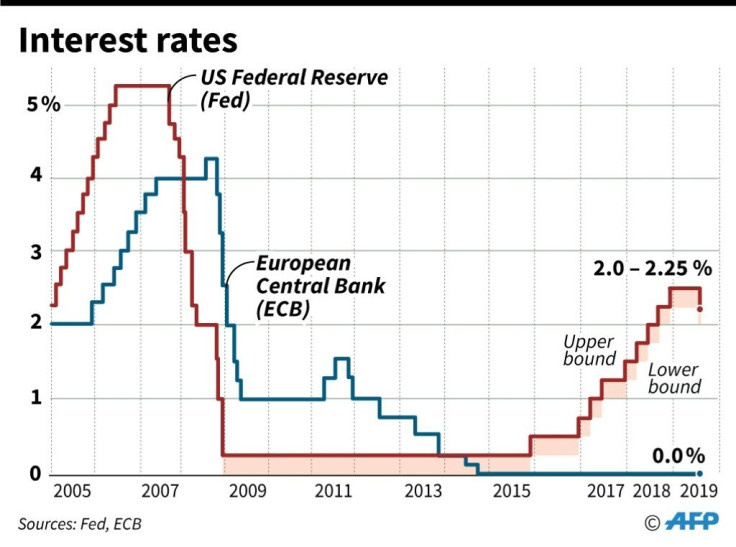Fed's Powell addresses US economy's direction in key speech

Fed Chair Jerome Powell was poised to deliver a highly anticipated speech on the direction of the US economy Friday amid daily brickbats from President Donald Trump and fears of a looming recession.
After some communication misfires, the Fed chief will have another opportunity to send a clear message in his speech at an annual gathering of central bankers and economists in Jackson Hole, Wyoming.
Powell is walking a very narrow path as he tries to defend the Fed's independence from political interference, do the right thing for the economy with limited ammunition, and manage divisions within the central bank itself over the correct course for interest rates.
And as warning signs about a possible recession flash red, any misstep threatens to roil financial markets -- which are expecting, even demanding, more rate cuts -- and that would be sure to stoke Trump's anger anew.
Although he appointed Powell to his position, Trump has excoriated him almost daily for raising the key interest rate too quickly last year, and is calling on the Fed to cut rates drastically to help the economy and weaken the US dollar.
On Thursday he took to Twitter to complain that lower interest rates in Europe were putting the US at a competitive disadvantage.
"Our Federal Reserve does not allow us to do what we must do. They put us at a disadvantage against our competition," he tweeted.
"Strong Dollar, No Inflation! They move like quicksand. Fight or go home!"
'Corral the cats'
In fact it is Trump's trade war with Beijing that has stoked fears of an economic downturn, especially coming on top of Brexit's impact on Europe, and a slowdown in China and Germany. And China on Friday announced plans for further retaliation, which makes a quick solution even more unlikely.
The International Monetary Fund has downgraded global growth, and the minutes of the Fed's last policy meeting revealed that officials fear the blowback from continued trade uncertainty will come back to bite the US economy.
Trump's renewed attack targeting $300 billion in Chinese goods for new tariffs, on top of $250 billion already hit by punitive duties, sent markets reeling and pushed the yield on the 10-year Treasury below shorter term debt. This inversion, which was repeated Thursday, is viewed as a reliable warning of impending recession.
Powell late last month explained the Fed's first rate cut in a decade as insurance "against downside risks from weak global growth and trade policy uncertainty, to help offset the effects these factors are having on the economy."
But he stumbled in his explanation, leaving markets wondering whether more cuts were coming.
And the minutes of that policy meeting showed the Fed is divided, with some officials opposed to rate cuts while a couple favored even bigger cuts.
Esther George, president of the Kansas City Federal Reserve Bank which hosts the Jackson Hole event, is one who voted against cutting rates.
"It wasn't required in my view," she said on CNBC Thursday.
Although she acknowledged the risks facing the US economy, "I don't yet see the signal that suggests it's time to get worried about a downturn."
But "I'll keep watching that for sure," she said.
However, St Louis Fed President James Bullard who favored cuts, said early Friday that he favors "more insurance" against economic risks, especially since inflation has fallen short of the two-percent goal for several years.
"I'd like to take out more insurance against a downside risk," Bullard said on CNBC. "We can take the insurance back next year if turns out this is all going to blow over."
But referring to the inverted yield curve, in which longer term US Treasury bond returns are lower than shorter-term returns, "That's not a good place to be."
Diane Swonk, chief economist at Grant Thornton, said that division of opinion explains why Powell had such a hard time explaining the Fed's decision to cut rates.
"The vote cleared by an even smaller majority than depicted in the statement; they had two extremes fighting against each other," Swonk said.
"Look for Powell to attempt to corral the cats with his speech in Jackson Hole on Friday," she said in an analysis, predicting he will signal that another rate cut is coming at the September 17-18 Fed meeting.
She is among the economists expecting the US central bank to cut interest rates twice more this year.
The topic of Powell's speech is "Challenges for Monetary Policy" -- an understatement given the stakes.
© Copyright AFP 2024. All rights reserved.




















